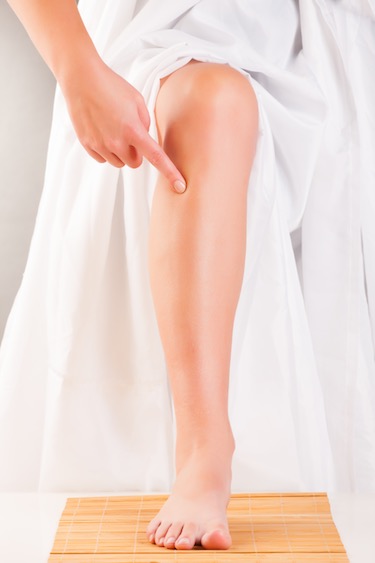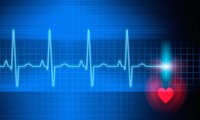Acupuncture significantly enhances peripheral blood flow. Photoplethysmography results published in Electron Devices and Solid-State Circuits demonstrates that acupuncture induces “significant elevation of peripheral blood flow.”  The research team making this discovery notes that a prior investigation using single-channel photoplethysmography demonstrates that acupuncture enhances “local microvascular blood flow in tissue surrounding Zusanli after acupuncture at that site.” The new research takes the investigation another step further. Using multi-channel photoplethysmography, the researchers demonstrate that needling acupuncture point ST36 (Zusanli) induces “significant elevations in whole body peripheral blood flow and parasympathetic activities after acupuncture at Zusanli.”
The research team making this discovery notes that a prior investigation using single-channel photoplethysmography demonstrates that acupuncture enhances “local microvascular blood flow in tissue surrounding Zusanli after acupuncture at that site.” The new research takes the investigation another step further. Using multi-channel photoplethysmography, the researchers demonstrate that needling acupuncture point ST36 (Zusanli) induces “significant elevations in whole body peripheral blood flow and parasympathetic activities after acupuncture at Zusanli.”
The ancient principles of traditional Chinese medicine (TCM) posit acupuncture as a means to regulate qi and blood flow throughout the body through a transporting network of meridians and acupuncture points along those meridians. The researchers note that the study “reinforces the theory of traditional Chinese medicine….” The researchers measured acupuncture’s ability to induce “significant elevations in peripheral blood flow over the upper and lower limbs during and after acupuncture.” Based on the findings, the researchers conclude that “the results of this study support the theory of Chinese medicine that acupuncture at Zusanli augments systemic gastrointestinal and circulatory functions.”
The researchers provide background concerning the need for this investigation. In 1996, the World Health Organization (WHO) denoted that acupuncture is beneficial in the treatment of 64 conditions including those involving pain, psychiatric concerns, neurological disorders, digestive imbalances, respiratory disorders, dermatological conditions, and gynecological diseases. They add that in Taiwan, acupuncture is commonly used for the treatment of many conditions including “stroke, dementia, Parkinson’s disease, epilepsy, Bell’s palsy, carpal tunnel syndrome, and headache.” The study was designed to clarify the mechanisms by which acupuncture exerts its effective actions.
About The Point
Acupuncture point ST36 is located on the lower leg. According to TCM principles, it is a he-sea, earth, lower he-sea of the stomach, and sea of nourishment point. It is also a Gao Wu command point and a Ma Dan-yang heavenly star point. ST36 functions to order the spleen and stomach, regulate qi and blood, and strengthen weak and deficient conditions. Traditional indications for using ST36 include: gastrointestinal pain, emesis, abdominal distention, diarrhea or constipation, mastitis, abscessed breast, enteritis, gastritis, edema, asthma, anemia, lassitude, exhaustion, indigestion, hemiplegia, mania, and neurasthenia.

Equipment
Photoplethysmography is a non-invasive optical technique used to measure blood volume changes in microvascular beds. The researchers used an eight-channel photoplethysmography device made by the Lite-On Electronics Company. High and low-pass filters with cutoff frequencies of 0.48 - 10 Hz were implemented. The signals were processed by a USB-6210 DAQ analog to digital converter made by National Instruments (Austin, Texas). A computer was used to store the data and perform waveform monitoring and analysis.
Reference:
Yang, Cheng-Chan, Wei-You Zhuang, and Hsien-Tsai Wu. "Assessment of the impact of acupuncture on peripheral blood flow with multi-channel photoplethysmography." In Electron Devices and Solid-State Circuits (EDSSC), 2014 IEEE International Conference on, pp. 1-2. IEEE, 2014.


